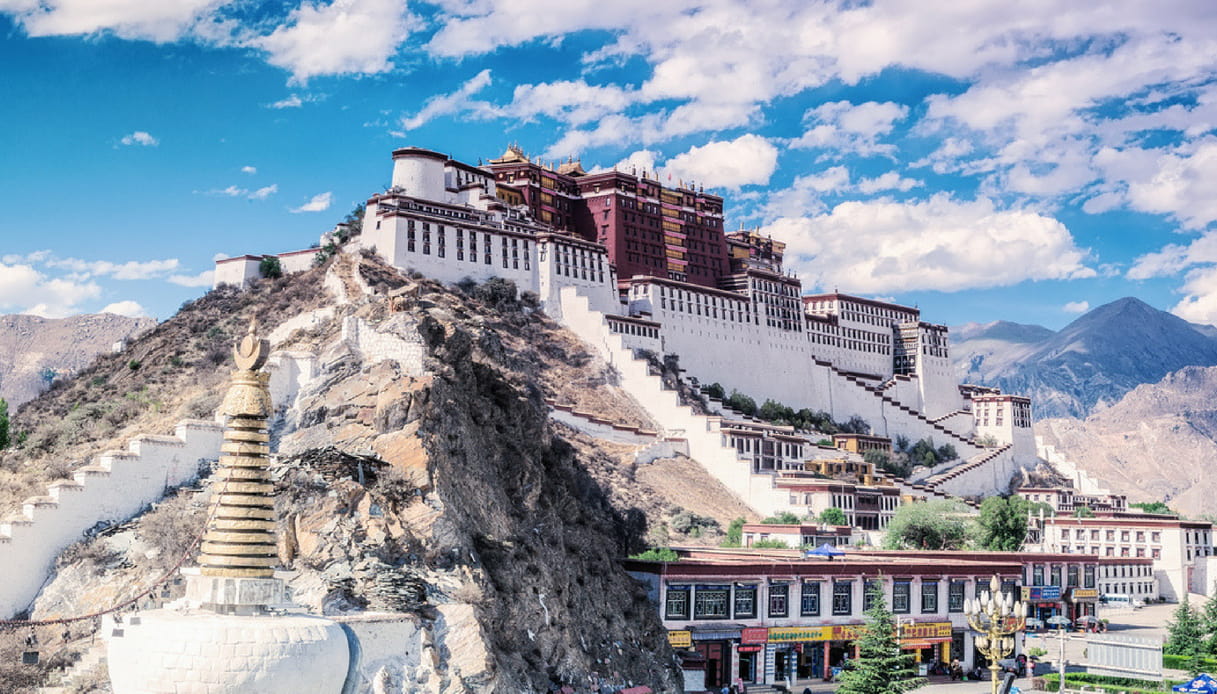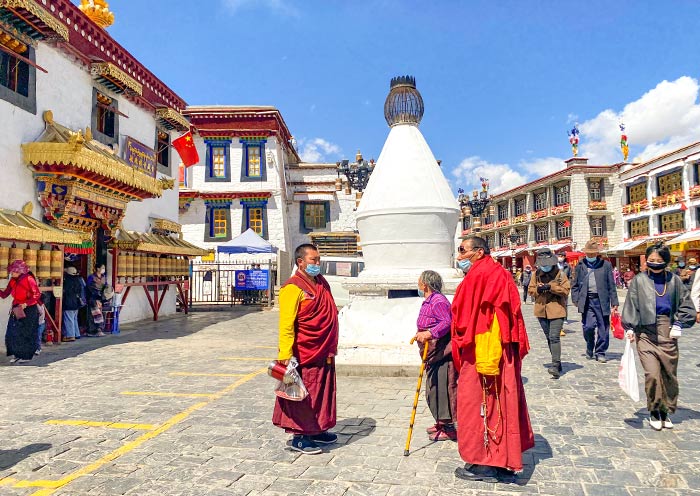
In the heart of the Himalayas lies Lhasa, a city that has been a beacon of Tibetan culture and spirituality for centuries. Known as the “Land of the Gods,” Lhasa is both a cultural gem and a spiritual sanctuary for Tibetan Buddhism. From the architectural wonder of the Potala Palace to the vibrant, bustling streets of Barkhor, Lhasa offers visitors an authentic glimpse into a unique way of life centered on devotion, resilience, and heritage.
The Potala Palace: An Architectural and Spiritual Icon
Towering over Lhasa from Red Hill, the Potala Palace is perhaps the most iconic symbol of Tibet. Originally built in the 7th century and expanded in the 17th, this majestic structure served as the residence of the Dalai Lama until the mid-20th century. With its red and white walls, golden roofs, and intricate Tibetan carvings, the Potala Palace is as visually striking as it is spiritually significant.
Within its walls, visitors will find over a thousand rooms filled with sacred Buddhist relics, statues, and ancient scriptures. The palace itself is divided into the White Palace, which served as the administrative quarters, and the Red Palace, a space dedicated to religious study and meditation. Visiting the Potala Palace offers a rare window into the spiritual life of Tibetan Buddhism and the profound reverence with which it is practiced.

Barkhor Street: A Sacred Pilgrimage Path
At the heart of Lhasa lies Barkhor Street, an ancient pilgrimage route that surrounds the Jokhang Temple, Tibet’s most revered religious site. The circular street, lined with prayer wheels, local shops, and incense-filled air, is more than a marketplace; it’s a spiritual path that Tibetan Buddhists have walked for centuries. Here, pilgrims of all ages can be seen performing kora (circumambulation) around the temple, some prostrating themselves in devotion.
Barkhor Street offers an immersive experience into daily Tibetan life, where spirituality, tradition, and commerce blend seamlessly. The street is lined with shops selling prayer flags, yak butter candles, and traditional Tibetan handicrafts. Visitors can find everything from jewelry to Tibetan Thangka paintings, each item embodying an aspect of local culture. Walking Barkhor is an opportunity not only to shop but also to experience the rhythm of Tibetan devotion and witness the connection between spirituality and daily life.
Tibetan Buddhism: A Way of Life in Lhasa
Tibetan Buddhism is deeply rooted in the culture of Lhasa, shaping everything from its architecture to its festivals. For the people of Lhasa, spirituality is woven into daily life, influencing everything from art to family practices. Major monasteries like Drepung, Sera, and Ganden, located near Lhasa, are not only centers of learning but also places of pilgrimage. Visitors are often welcomed to observe the monks during their prayer sessions or philosophical debates, offering an intimate glimpse into the monastic traditions that are central to Tibetan culture.
Preserving Culture and Tradition in Modern Lhasa
In recent years, Lhasa has seen a blend of modern development and traditional preservation. Despite external influences, the spirit of Lhasa remains vibrant and resilient. Efforts to protect cultural landmarks and support local artisans help ensure that Tibetan culture endures, providing visitors with an authentic experience of Lhasa’s heritage.
A visit to Lhasa is more than just a journey to a distant city—it’s an invitation to connect with a unique spiritual culture, a place where ancient practices and beliefs remain a daily reality. For travelers seeking a destination rich in spirituality and tradition, Lhasa stands as a city of timeless beauty and profound cultural significance. Whether exploring the halls of the Potala Palace or walking alongside pilgrims on Barkhor Street, Lhasa offers a journey of the heart and soul, inspiring a deep appreciation for the living heritage of Tibet.
